Healthcare System-to-System Cost Variability in the Care of Pediatric Abdominal Pain-Associated Functional Gastrointestinal Disorders
Abstract
:1. Introduction
2. Materials and Methods
2.1. Patients
2.2. Variables
2.3. Statistical Analysis
3. Results
4. Discussion
5. Conclusions
Author Contributions
Funding
Institutional Review Board Statement
Informed Consent Statement
Data Availability Statement
Conflicts of Interest
References
- Korterink, J.; Diederen, K.; Benninga, M.; Tabbers, M. Epidemiology of Pediatric Functional Abdominal Pain Disorders: A Meta-Analysis. PLoS ONE 2015, 10, e0126982. [Google Scholar] [CrossRef] [PubMed] [Green Version]
- Hyams, J.; Di Lorenzo, C.; Saps, M.; Shulman, R.J.; Staiano, A.; van Tilburg, M. Childhood Functional Gastrointestinal Disorders: Child/Adolescent. Gastroenterology 2016, 150, 1456–1468.e2. [Google Scholar] [CrossRef] [PubMed]
- Hoekman, D.; Rutten, J.; Vlieger, A.; Benninga, M.A.; Dijkgraaf, M.G.W. Annual Costs of Care for Pediatric Irritable Bowel Syndrome, Functional Abdominal Pain, and Functional Abdominal Pain Syndrome. J. Pediatr. 2015, 167, 1103–1108.e2. [Google Scholar] [CrossRef] [PubMed]
- Dhroove, G.; Chogle, A.; Saps, M. A Million-dollar Work-up for Abdominal Pain: Is It Worth It? J. Pediatr. Gastroenterol. Nutr. 2010, 51, 579–583. [Google Scholar] [CrossRef]
- Park, R.; Mikami, S.; LeClair, J.; Bollom, A.; Lembok, C.; Jones, M.; Cheng, V.; Friedlander, E.; Nurko, S. Inpatient burden of childhood functional GI disorders in the USA: An analysis of national trends in the USA from 1997 to 2009. Neurogastroenterol. Motil. 2015, 27, 684–692. [Google Scholar] [CrossRef]
- Mani, J.; Madani, S.; Thomas, R. Economic impact and prognostic factors of functional dyspepsia in children. J. Pediatr. Gastroenterol. Nutr. 2020, 70, e65–e70. [Google Scholar] [CrossRef]
- Tack, J.; Stanghellini, V.; Mearin, F.; Yiannakou, Y.; Layer, P.; Coffin, B.; Simren, M.; Mackinnon, J.; Wiseman, G.; Marciniak, A.; et al. Economic burden of moderate to severe irritable bowel syndrome with constipation in six European countries. BMC Gastroenterol. 2019, 19, 69. [Google Scholar] [CrossRef] [Green Version]
- Beinvogl, B.; Palmer, N.; Kohane, I.; Nurko, S. Healthcare spending and utilization for pediatric irritable bowel syndrome in a commercially insured population. Neurogastroenterol. Motil. 2021, 33, e14147. [Google Scholar] [CrossRef]
- Jakovljevic, M.; Fernandes, P.O.; Teixeira, J.P.; Rancic, N.; Timofeyev, Y.; Reshetnikov, V. Underlying differences in health spending within the World Health Organisation Europe Region- Comparing EU15, EU Post-2004, CIS, EU Candidate and CARINFONET countries. Int. J. Environ. Res. Public Health 2019, 16, 3043. [Google Scholar] [CrossRef] [Green Version]
- Jakovljevic, M.; Timofeyev, Y.; Ekkert, N.V.; Fedorova, J.V.; Skvirskaya, G.; Bolevich, S.; Reshetnikov, V.A. The impact of health expenditures on public health in BRICS nations. J. Sport Health Sci. 2019, 8, 516–519. [Google Scholar] [CrossRef]
- Global Burden of Disease Child and Adolescent Health Collaboration. Child and adolescent health from 1990 to 2015: Findings from the global burden of diseases, injuries, and risk factors 2015 study. JAMA Pediatr. 2017, 171, 573–592. [Google Scholar] [CrossRef] [PubMed] [Green Version]
- Global Burden of Disease Health Financing Collaborator Network. Evolution and patterns of global health financing 1995–2014: Development assistance for health, and government, prepaid private, and out-of-pocket health spending in 184 countries. Lancet 2017, 389, 1981–2004. [Google Scholar] [CrossRef] [Green Version]
- Inadomi, J.M.; Fennerty, M.B.; Bjorkman, D. Systematic review: The economic impact of irritable bowel syndrome. Aliment. Pharm. 2003, 18, 671–682. [Google Scholar] [CrossRef] [PubMed] [Green Version]
- Canavan, C.; West, J.; Card, T. Review article: The economic impact of the irritable bowel syndrome. Aliment. Pharm. 2014, 40, 1023–1034. [Google Scholar] [CrossRef] [PubMed] [Green Version]
- Zhang, F.; Xiang, W.; Li, C.Y.; Li, S.C. Economic burden of irritable bowel syndrome in China. World J. Gastroenterol. 2016, 22, 10450–10460. [Google Scholar] [CrossRef]
- Lane, M.M.; Weidler, E.M.; Czyzewski, D.I.; Shulman, R.J. Pain symptoms and stooling patterns do not drive diagnostic costs for children with functional abdominal pain and irritable bowel syndrome in primary or tertiary care. Pediatrics 2009, 123, 758–764. [Google Scholar] [CrossRef] [Green Version]
- Schurman, J.V.; Hunter, H.L.; Friesen, C.A. Conceptualization and treatment of chronic abdominal pain in pediatric gastroenterology practice. J. Pediatr. Gastroenterol. Nutr. 2010, 50, 32–37. [Google Scholar] [CrossRef]
- Sjölund, J.; Uusijärvi, A.; Tornkvist, N.T.; Kull, I.; Bergström, A.; Alm, J.; Törnblom, H.; Olén, O.; Simrén, M. Prevalence and progression of recurrent abdominal pain, from early childhood to adolescence. Clin. Gastroenterol. Hepatol. 2021, 19, 930–938. [Google Scholar] [CrossRef]
- Deacy, A.D.; Friesen, C.A.; Staggs, V.S.; Schurman, J.V. Evaluation of clinical outcomes in an interdisciplinary abdominal clinic: A retrospective, exploratory review. World J. Gastroenterol. 2019, 25, 3079–3090. [Google Scholar] [CrossRef]
- Alegria, M.; Vallas, M.; Pumariega, A. Racial and ethnic disparities in pediatric mental health. Child Adolesc. Psychiatr. Clin. N Am. 2010, 19, 759–774. [Google Scholar] [CrossRef] [Green Version]
- Chogle, A.; Dhroove, G.; Sztainberg, M.; Di Lorenzo, C.; Saps, M. How reliable are the Rome III criteria for the assessment of functional gastrointestinal disorders in children? Am. J. Gastroenterol. 2010, 105, 2697–2701. [Google Scholar] [CrossRef] [PubMed]
- Glynn, E.F.; Hoffman, M.A. Heterogeneity introduced by HER system implementation in a de-identified data resource from 100 non-affiliated organizations. JAMIA Open 2019, 2, 554–561. [Google Scholar] [CrossRef] [PubMed]
- DeShazo, J.P.; Hoffman, M.A. A comparison of a multistate inpatient EHR database to the HCUP Nationwide Inpatient Sample. BMC Health Serv. Res. 2015, 15, 384. [Google Scholar] [CrossRef] [PubMed] [Green Version]
- Seid, M.; Hartley, D.M.; Dellal, G.; Myers, S.; Margolis, P.A. Organizing collaboration: An actor-oriented architecture in ImproveCareNow. Learn. Health Syst. 2020, 4, e10205. [Google Scholar] [CrossRef] [Green Version]
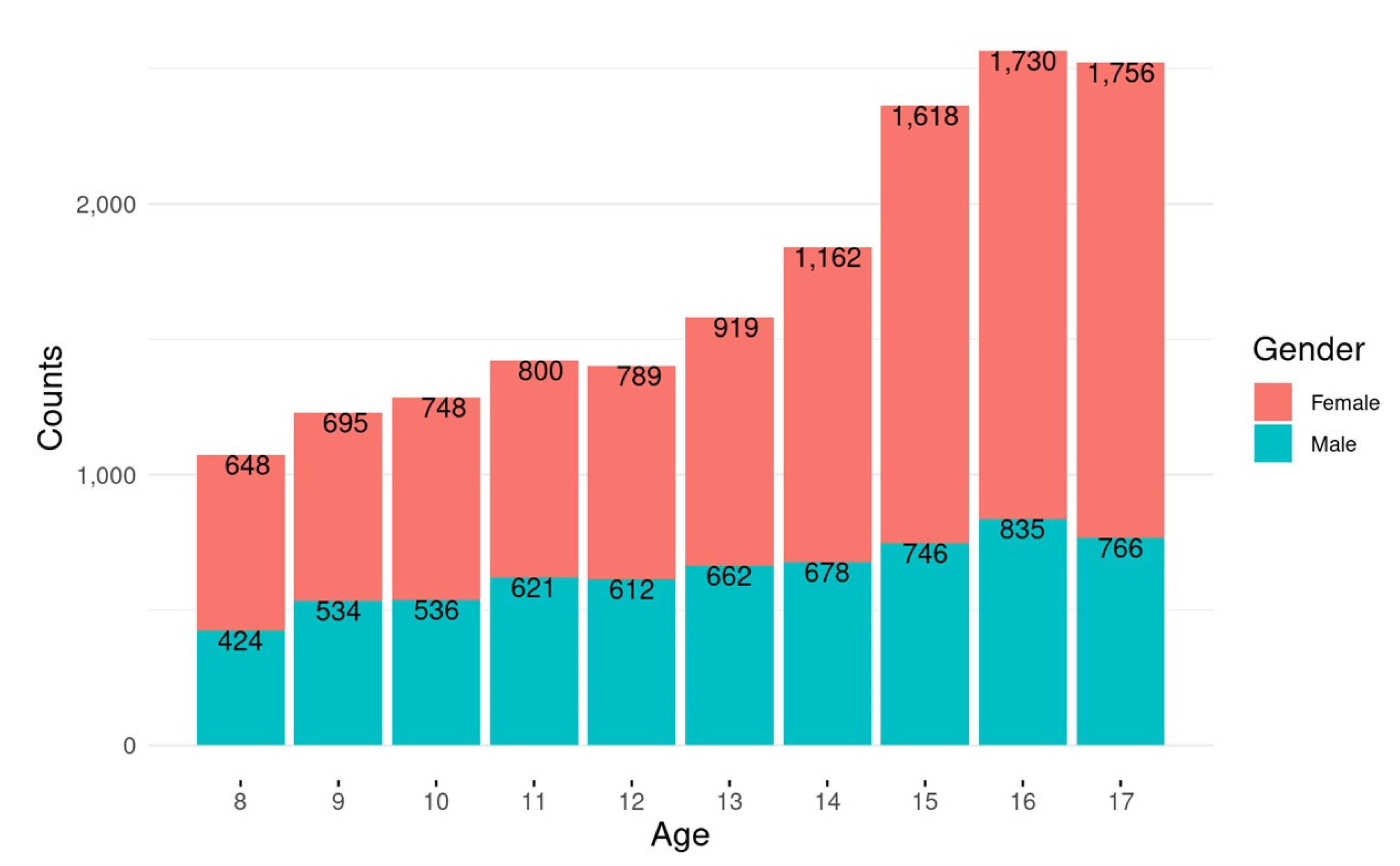
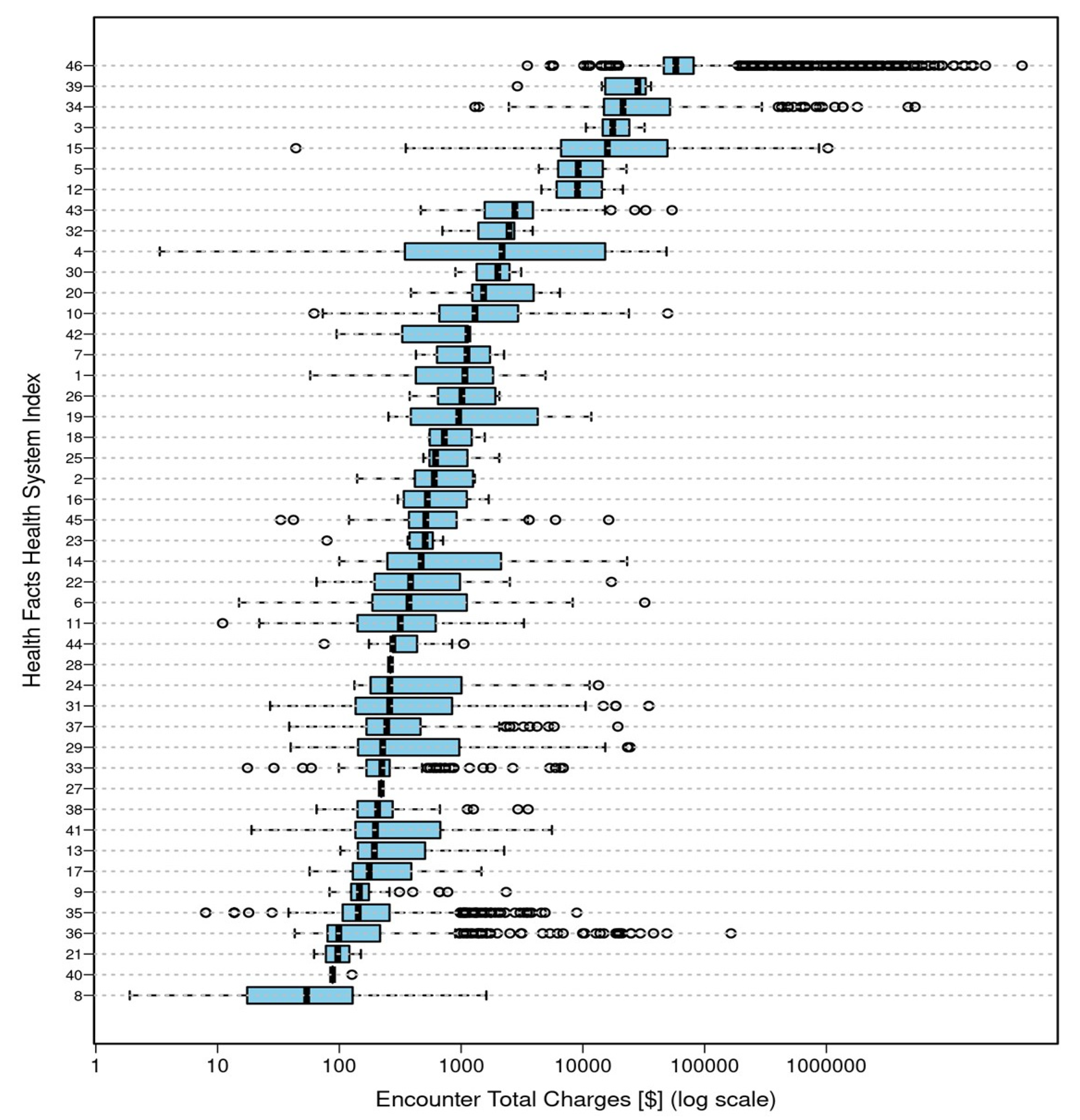
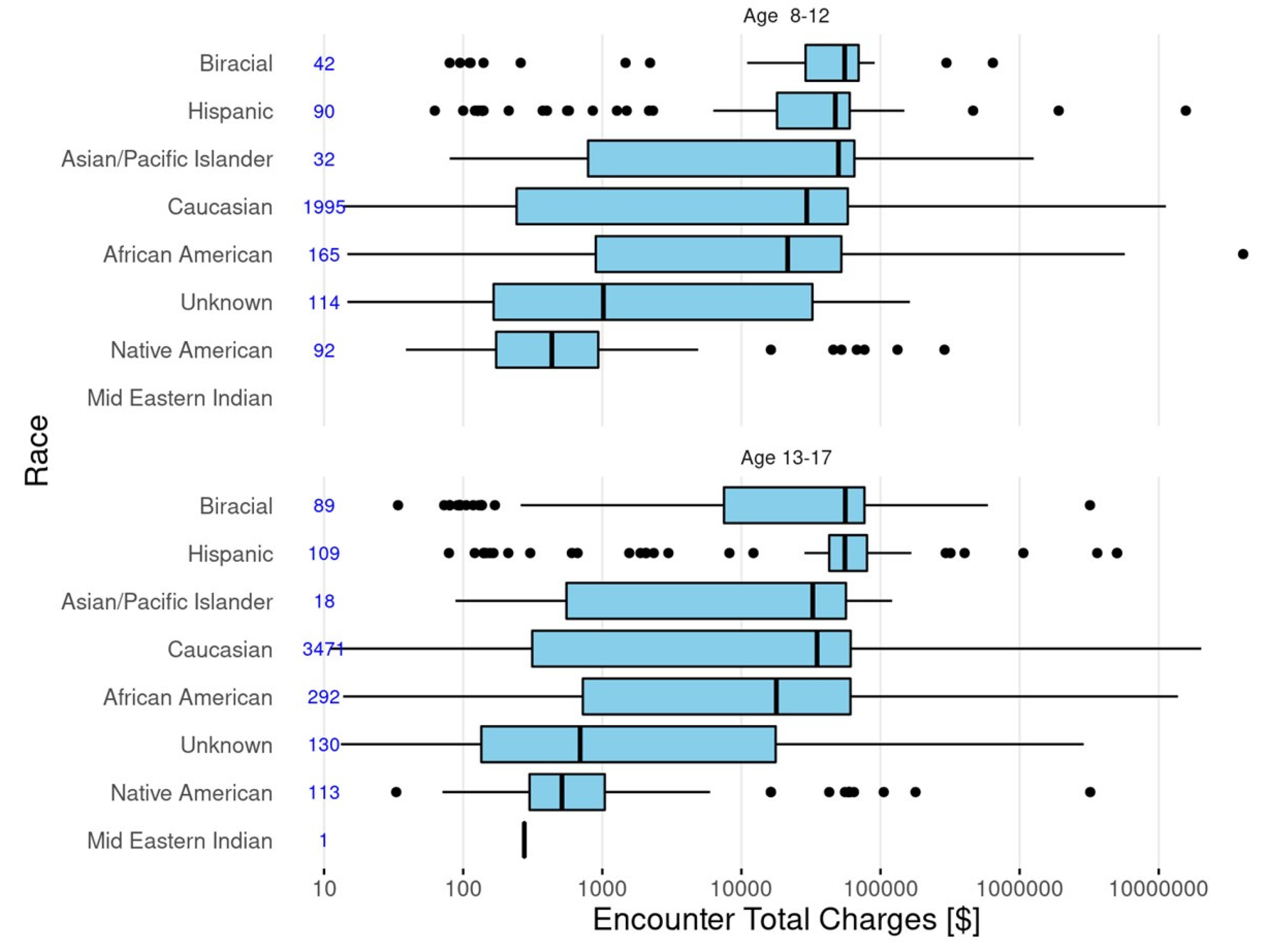
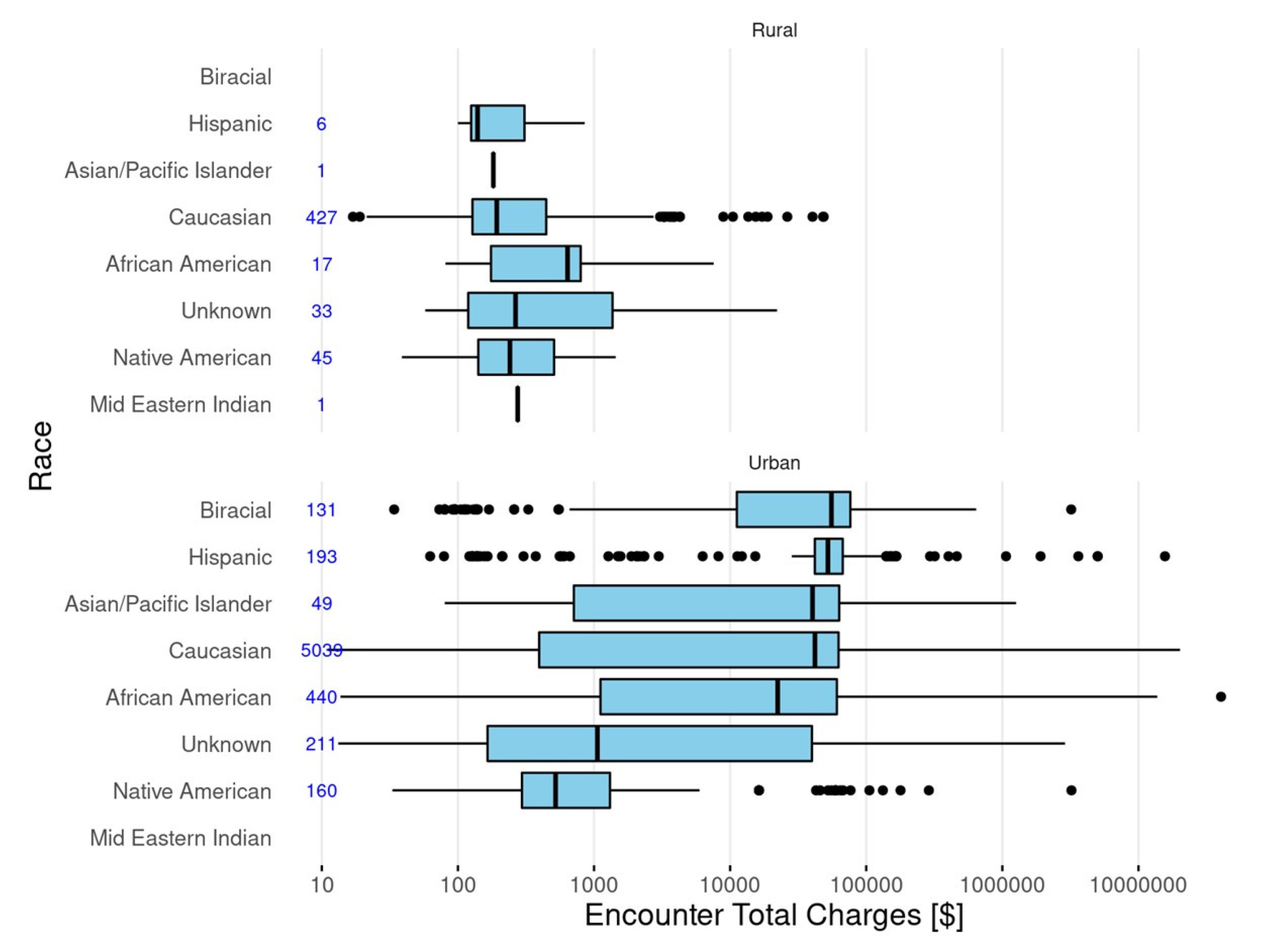
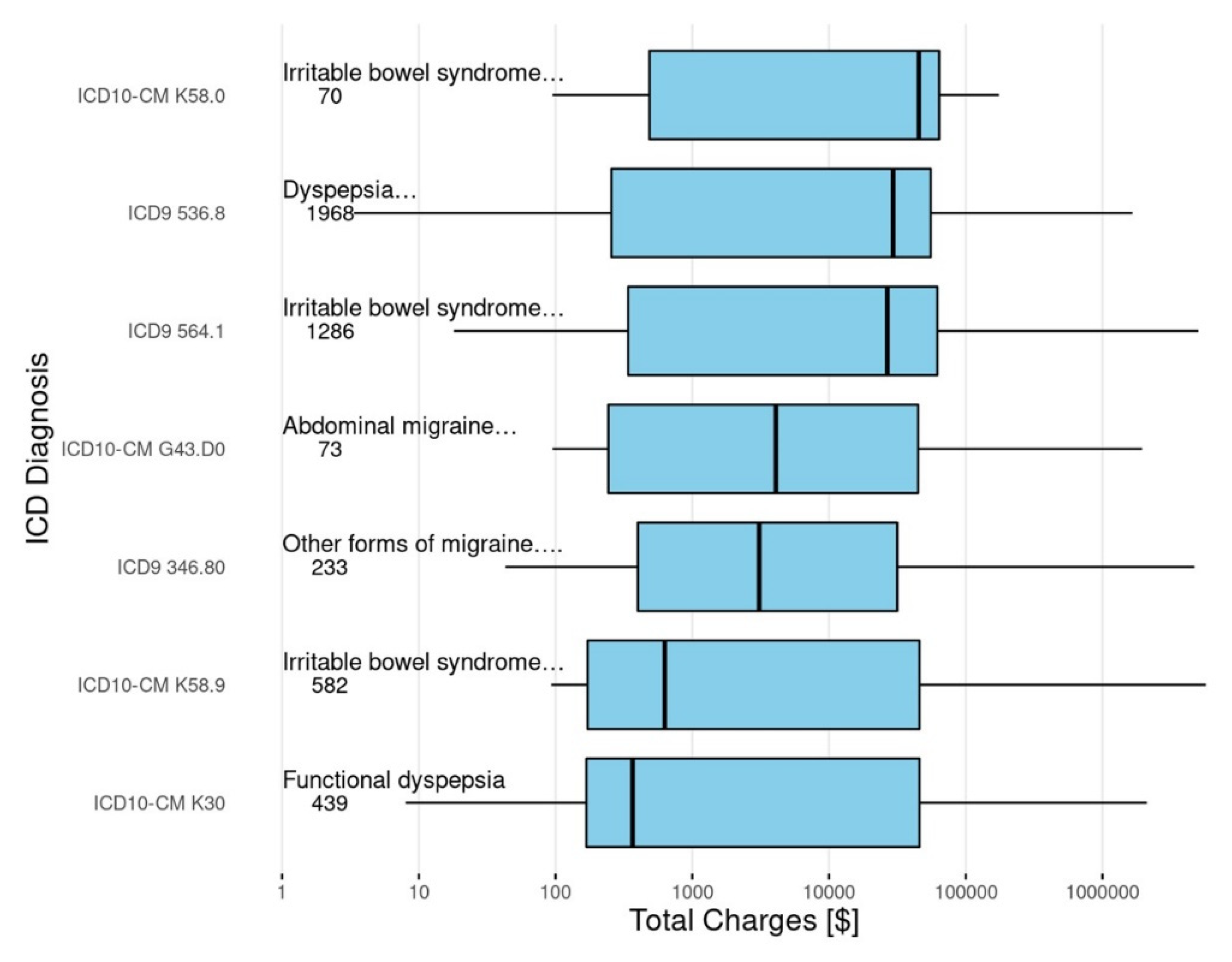
| Diagnosis | ICD-9 Codes | % of Total | ICD-10 Codes | % of Total |
|---|---|---|---|---|
| Abdominal Migraine | 346.8; 789.06 | 3.2% | G43.D0; G43.D1 | 2.3% |
| Functional Dyspepsia | 536.8 | 37.1% | K30; | 13.8% |
| Irritable Bowel Syndrome | 564.1 | 28.2% | K58.0; K58.1 K58.2; K58.8; K58.9 | 15.4% |
Publisher’s Note: MDPI stays neutral with regard to jurisdictional claims in published maps and institutional affiliations. |
© 2021 by the authors. Licensee MDPI, Basel, Switzerland. This article is an open access article distributed under the terms and conditions of the Creative Commons Attribution (CC BY) license (https://creativecommons.org/licenses/by/4.0/).
Share and Cite
Livitz, M.; Friesen, A.S.; Glynn, E.F.; Schurman, J.V.; Colombo, J.M.; Friesen, C.A. Healthcare System-to-System Cost Variability in the Care of Pediatric Abdominal Pain-Associated Functional Gastrointestinal Disorders. Children 2021, 8, 985. https://doi.org/10.3390/children8110985
Livitz M, Friesen AS, Glynn EF, Schurman JV, Colombo JM, Friesen CA. Healthcare System-to-System Cost Variability in the Care of Pediatric Abdominal Pain-Associated Functional Gastrointestinal Disorders. Children. 2021; 8(11):985. https://doi.org/10.3390/children8110985
Chicago/Turabian StyleLivitz, Michelle, Alec S. Friesen, Earl F. Glynn, Jennifer V. Schurman, Jennifer M. Colombo, and Craig A. Friesen. 2021. "Healthcare System-to-System Cost Variability in the Care of Pediatric Abdominal Pain-Associated Functional Gastrointestinal Disorders" Children 8, no. 11: 985. https://doi.org/10.3390/children8110985
APA StyleLivitz, M., Friesen, A. S., Glynn, E. F., Schurman, J. V., Colombo, J. M., & Friesen, C. A. (2021). Healthcare System-to-System Cost Variability in the Care of Pediatric Abdominal Pain-Associated Functional Gastrointestinal Disorders. Children, 8(11), 985. https://doi.org/10.3390/children8110985







